mytest
eBooks, Books, and more from ARUDOU, Debito (click on icon):
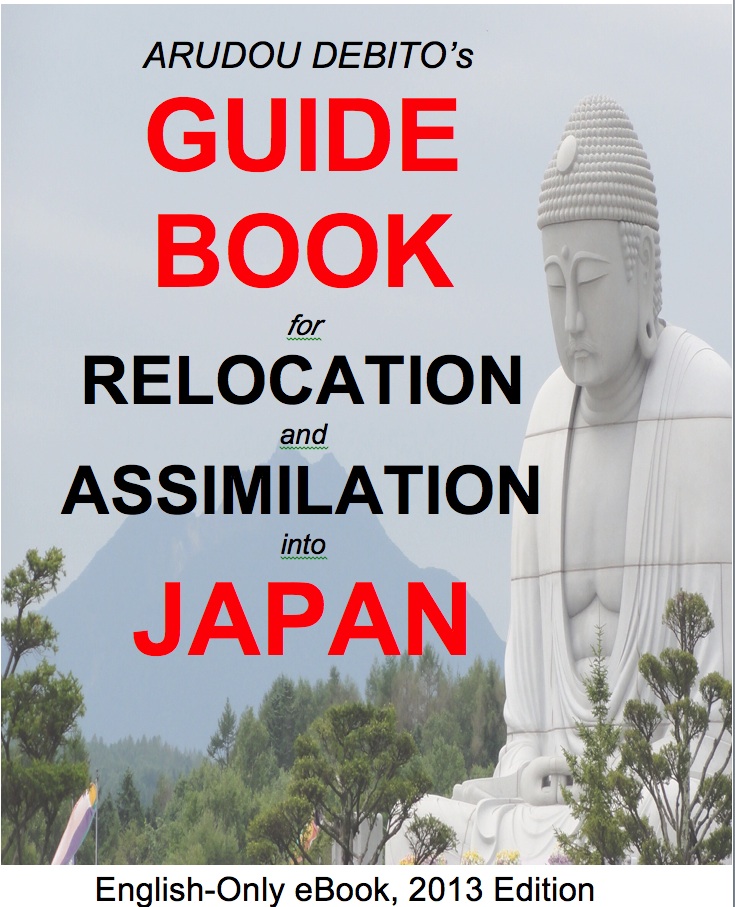
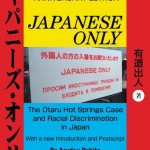
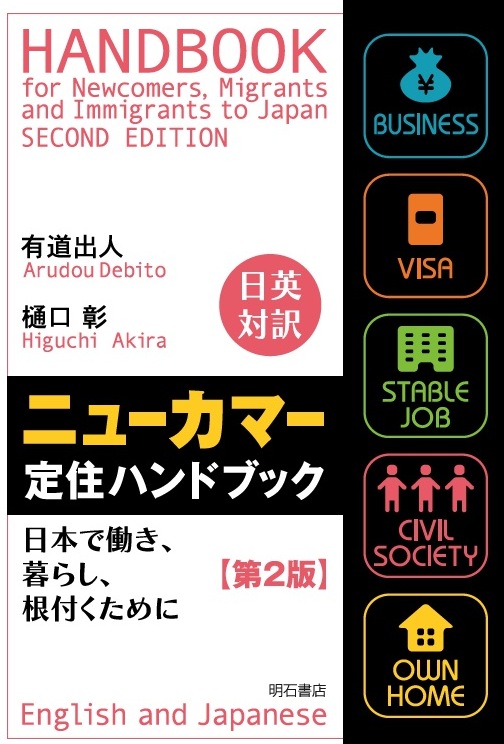
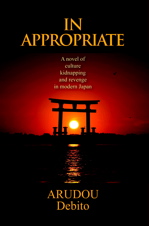

![]()

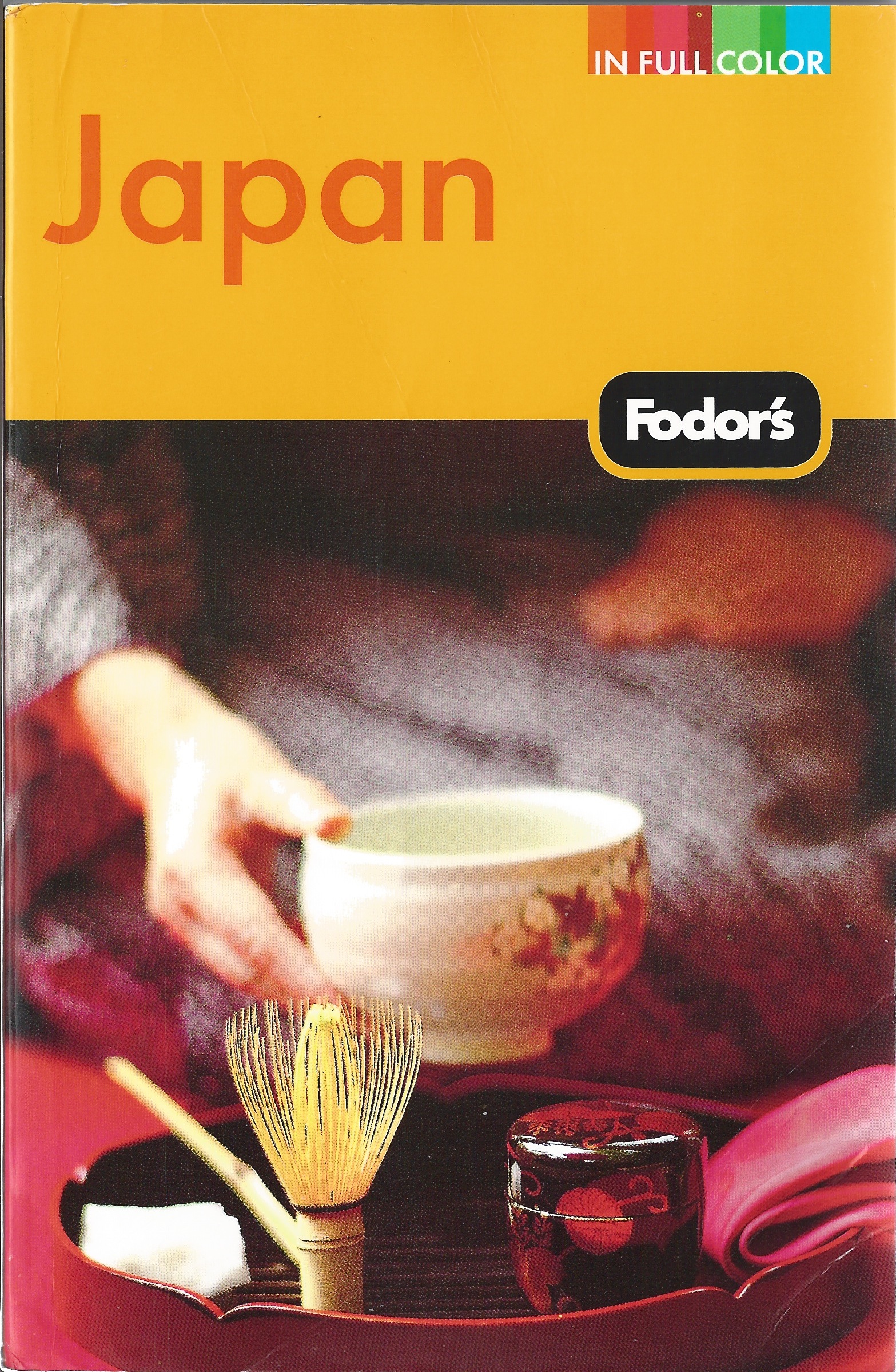
UPDATES ON TWITTER: arudoudebito
DEBITO.ORG PODCASTS on iTunes, subscribe free
“LIKE” US on Facebook at http://www.facebook.com/debitoorg
http://www.facebook.com/handbookimmigrants
https://www.facebook.com/JapaneseOnlyTheBook
https://www.facebook.com/BookInAppropriate
If you like what you read and discuss on Debito.org, please consider helping us stop hackers and defray maintenance costs with a little donation via my webhoster:

All donations go towards website costs only. Thanks for your support!
Hi Blog. Any good organization wanting public approval (or in this case, approval from its geopolitical “friends”) does outreach. And this very professional online magazine issued yesterday from the Abe Administration, called “We are Tomodachi”, is worth an introduction to Debito.org Readers. It offers fascinating insights into what the PM Abe Administration is thinking (or trying to convince you it is thinking — something few branches of Japan’s governmental organs do in any convincing detail even for its citizens).
As The Economist (London) recently noted, Abe is “Japan’s most purposeful prime minister for many years“, and many of Abe’s purposes are herein clearly argued in well-proofed English, albeit in all their stiff transparency.
I mean “transparent” in the sense that the aim of the propaganda is pretty obvious. But I also mean “stiff”. For example, check this picture out:
Surely they could have chosen a better picture. The message one gets is of a very stiff and uncomfortable Abe plonked amidst Japan’s little African brothers (okay, sisters) who have little idea who he is and practically no enthusiasm for him being there.
Yet this is the cover photo of the magazine!
Moving on, here’s the email promo I got last night:
////////////////////////////////////////
From: We are ‘Tomodachi’ by Japan Gov. <tomodachi@cas.go.jp>
Date: June 8, 2014
Subject: “Tomodachi” Newsletter Vol.4
==========================================================
This e-mail has been sent to people who consented
to receive the “Tomodachi” newsletter.
==========================================================
Greetings from the staff of the Prime Minister’s Office of Japan
“We Are Tomodachi” is an e-book published with the aim of further deepening people’s understanding of the initiatives of the Government of Japan and the charms of Japan. With the recent events that have taken place, including the visit to Japan by the U.S. President and the Japanese Prime Minister’s visit to European countries from late April to early May, on May 31, we released the spring/summer edition, which is a revised version of the spring edition. The link is as follows.
http://japan.kantei.go.jp/letters/index.html
*Clicking on the E-BOOK icon at the center of the screen will allow you to view the e-book in browsing mode.
The PDF version is available for download by clicking on the PDF icon.
We very much hope you will read this for a deeper understanding about Japan.
The summer edition will be released in mid-July.
We are preparing a broad range of topics, including an introduction to colorful fireworks that light up the evening sky and a feature on women who play an active role in society. Please stay tuned!
=========================================================
The Staff of the Office of Global Communications,
Prime Minister’s Office of Japan
public.relations@cas.go.jp
=========================================================
*You can visit the URL below to terminate your subscription to this newsletter or change the address at which you receive it:
https://www.mmz.kantei.go.jp/tomodachi/unsubscribe.php
////////////////////////////////////////
The inside of the 80-page magazine is, again, fascinating in its prioritizing of subjects, including:
- Abe in Fukushima
- The aims for the Abe Administration (depicted as “kokorozashi”, complete with large kanji; I wish we had a shakuhachi soundtrack)
- A photo essay of Abe hobnobbing internationally this Spring
- Abe’s speeches
- A photo essay of Abe hobnobbing internationally over the past year
- “Abenomics is Progressing! Making the impossible possible” (complete with a graphic with — you guessed it — three arrows! Plus another one of him “drilling” through vested interests; yeah, sure.)
- Abe “actively engages” in dialogue
- The Road to Revival
- Fukushima’s contaminated water problem
- Japan’s Proactive Contribution to Peace (with lengthy explanations of how Japan’s new National Security Council and Act on the Protection of Specially-Designated Secrets is similar to if not milder than Official Secrets Acts elsewhere)
- International Contributions of Japan’s Self Defense Forces
- The Senkaku Islands: 3 Commonly Held Misconceptions
- A bit on the North Korean kidnappings of Japanese, making it into an international issue by including abductees from Thailand, Romania, Lebanon, and China (but if that’s the tack you want to take, why no mention of South Korean abductees?).
- Japan’s contributions to international attempts to decrease maternal mortality rates in Cambodia
- Empowering Farmers as Mainstream Economic Actors (in Africa)
- Japan’s Global-Leading Medical Services
- Useful information for traveling in Japan
- Travel times from Narita to downtown Tokyo — “How Fast It Has Become!”
- Free Wi-Fi Expands (for foreigners!)
- Related Websites and Publications
- Flower Festivals in Summer
- “Friends of Japan” (with profiles of Kendo Master Alexander Bennett, Heritage Preserver Alex Kerr, and Tea Ceremony and “Heart of Japanese Hospitality” Master Randy Channell Soei)
- What Surprises Foreigners About Japan (with a survey of — count them — a whole 50 foreigners, the majority of whom had their lost belongings returned! My, those honest Japanese! Good thing they weren’t talking about umbrellas or bicycles — or that theft is by far the largest crime in Japan)
- Japanese Customs (and come to Japan and be a JET teacher!)
And more. Part travel guide, part geopolitical gaijin handling, part cultural screed (cue those shakuhachis!), this is a great read to deconstruct how the Abe Administration is trying to march the Post-Bubble discourse on Japan back into the first-generation Postwar discourse. Ah, those were the days, when Japan’s elites had near-total control over Japan’s image in the world, and so few outsiders had any understanding (or or had experienced Japan in great depth) that they would ever be taken seriously by anyone who wasn’t a “real Japanese” (moreover, the handful of NJ who did know something could be co-opted as anointed cultural emissaries; they’re still trying to do it within this very magazine).
No, since then millions of people have since experienced Japan beyond the GOJ boilerplate, have lived and invested their lives in Japan, and have learned the Japanese language. So the dialogue is not so easily controlled by the elites anymore. (PM Abe’s Gaijin Handlers: If you’re dropping in on Debito.org again, Yokoso and enjoy our Omotenashi!)
So, Gaijin Handlers, here’s a lesson on what to avoid next time: What irritates people like us who know better is your cultivated mysticism in elite conversations about anything cultural in Japan. Consider this example of bogus social science (depicted as a “secret”) from page 72:
=============================
“The Japanese have a reputation for being taciturn and hard to communicate with. Probably the most difficult part of Japanese communication for people from other countries is the way people here converse wordlessly. When people are standing silently at some natural attraction, they’re using their five senses to feel nature and commune with it. So if you notice some quiet Japanese in such a spot, you might try joining them in their silence, taking in everything around you with all your senses: light, wind, sky, clouds, sounds, smells. Because even when nobody is talking, there is plenty of communication going on in Japan.”
=============================
This is a juicy claim for deconstruction under a number of genres of social science. The biggest confusion you’re going to cause in NJ tourists and newbies will come when they confront the amount of noise at many a tourist trap (especially from those trying to “nigiyaka” the place up with their megaphoned music), and wonder how they’re supposed to use all their five senses like the mystical Japanese apparently do. Logically, this also means the purported J-silence around awkward conversations could be due to the inscrutably “shy” Japanese trying to take NJ in with all their five senses too (I wonder what happens when they get to “Smell”, “Touch”, or “Taste”?). What rubbishy analytical tools. And it’s one reason why so many people (Japanese and NJ) go nuts in Japan, because they’re constantly told one thing yet experience another.
Anyway, there’s a lot there, so I’ll let Debito.org Readers go through this magazine and have some fun. For as sophisticated as Japan’s bureaucrats can be, they’re pretty clumsy when it comes to social science. Dr. ARUDOU, Debito
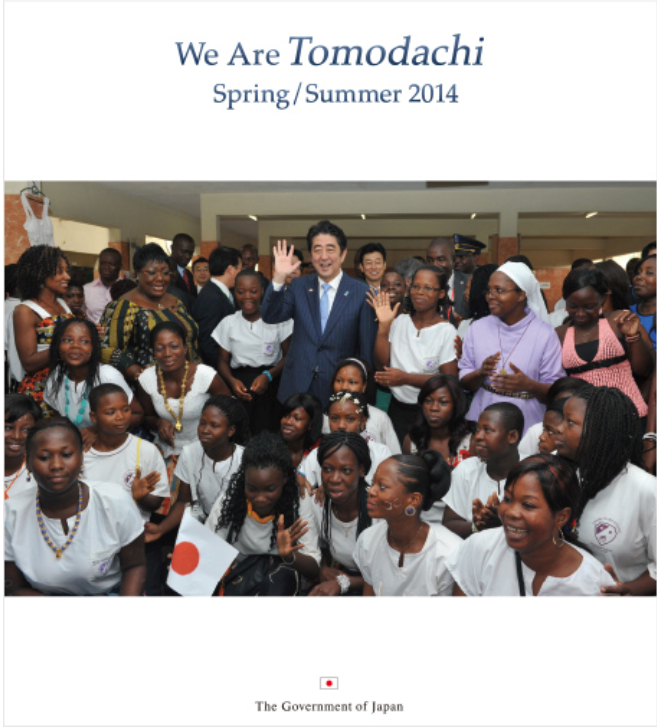
20 comments on “J-Govt. “We are Tomodachi” Newsletter Vol. 4 , June 2014 offers fascinating insights into PM Abe Admin mindsets”
The ridiculousness of the snippet you posted, Debito, makes me cringe at reading the rest. It buys into every stereotype of Japanese, not to mention Asians. I can’t believe this is on GOJ published material. I can understand propaganda at its most basic level, but this goes beyond that and into something far creepier: self-denial; the kind of things people tell themselves to avoid reality. In fact, if I’m reading some of the chapter headings right, this is really about creating an unreality, one that attempts to justify questionable actions, or dismiss criticisms as mere “misunderstanding,” laying the blame on non-Japanese. “See, you really don’t understand us, yet.” Thanks for spending my taxes on this drivel Abe; more wool to pull over the eyes of sheep.
I doubt this quaint little magazine will have much impact or effect. I can’t imagine government departments having many serious discussions about how to do a global PR outreach offensive and them seriously thinking such a clumsily cobbled together e-book/pdf periodical will do the trick. Wait a minute, this being Japan, I actually CAN imagine it. Would love to see the actual pageviews /readership numbers, because it seems like either busywork or justification of a few more cushy jobs at the office to copypaste together this useless little fluffpiece with as much substance as an in-flight magazine.
Seriously though, who needs this ? Casual people interested in japanese (pop/traditional) culture won’t care for the prime ministers speeches… snore… they’re not exactly the Gettysburg Address, you know ? Meanwhile policy wonks and advanced observers can also do without the tourist guide fillers (and turn to first-source news and journals for analysis anyways). It’s not even particularly “offensive” in its boilerplate content and presentation, the more offensive thing to me is that they think this would make for effective influential propaganda (or I’m just severely overestimating the intellectual capacities of the audience here).
As for them trying to push their nihonjinron via the cultural exposès, par for the course, every country more or less tries to advertise its unique features and selling points – but they’ll usually try to leave that stuff to the travel and tourism department, while one may expect a prime ministers office outlet more to handle matters of political seriosity. Trying to mix and tie together cultural and governmental messages can be problematic, if one were to do an overly critical analytic reading.
To pick apart all the little claims, tidbits and hypocrisies is indeed a futile exercise, at least to people here who have taken more than a passing glance at the country. I’ll eagerly await their thrilling take on how Japan is the only country in the world that has 4, count it, four unique seasons! Lo and behold, they do not disappoint. If Japan wants to tell itself how awesome it is, and that’s really what this is all about because even when it seems aimed at the outside world they are just to be made to support and agree with the japanese self-image, or to construct it in the first place – in fact, the recurrent use of foreigners themselves to repeat how awesome Japan is, leads one to interpret the dependence on affirmations of a rather fragile cultural identity. I mean, of course “who we are” is a question that every country has to answer (as long as they want to be nation and not just an improvised agglomeration of people who coincidentally live in the same place), and the results are usually varying levels of bullshit around the world – but trying to essentially establish a psychic hivemind (‘wordless communication’) is also right there on the upper end of the scale. Makes a nice contrast with my current residence Germany, whose similar outreach materials make it rather a point to promote how “NOT german” the country really is (totally hip and relaxed etc.)… which is kinda embarrassing too, just in a different direction.
Also funny to see Alex Kerr in there, who has written extensively to smash such japanese myths. Of course no mention of that here, they rather focus on his admiration of traditional architecture. Omitting that a big part of his critique is how modern Japan with its ugly concrete and nature destroying construction-state is belying its very own (and made-up to begin with) foundations. Similarly, that old canard about how the people are all supposed to be oh so ‘polite’ – they are actually ‘formal’, and that’s an important distinction (which you may only notice when you stay longer than a week and don’t get guest-goodwill anymore). Not to say that individual voluntary politeness does not exist, but ‘formality’ better describes how overall social relations are ordered, because of its scripted interactions, ritualized phrases and hierarchical structure. Sure, makes for a nice tourist trip, but frustrating in the long run.
We are Tomodachi.
Cue “20th Century Boy”.
And, seriously, the Tomodachi from that film and the Tomodachi of the GOJ are not dissimilar.
Wow. This is beyond creepy. The quoted passage about wordless communication is pure “Nihonjinron”. But it will be fruitless of course, as Japan’s other actions speak much louder – like the recent statement that Japan will not obey the ICJ’s ban of whale hunting and start hunting in Antarctica.
I’ve been reading the comments on this news in Germany’s most important media “Der Spiegel”, and the response is overwhelming: “Ban Japanese products from the EU”, “protest in front of Japanese restaurants”, etc.
The Abe Administration helps to unravel the myth of Japan faster than any before. Maybe the Fukushima accident was good for thing: To bring Japan back into the focus of people, at a time when Japan feels bold enough to rear it’s ugly head like never before.
— I would amend that last sentence to say that “Japan’s elites feel bold enough”…
Enginerd’s right; it’s nothing more than a navel gazing snooze fest, with the primary goal of telling the Japanese what it is to be ‘Japanese’.
If anybody bothers to read it, it won’t change their image of Japan.
— Oh, I don’t know about that. GOJ propaganda can be very persuasive for those people who don’t know any better, and naturally assume good faith and intention in others (and there are plenty of those who write to me about once or twice a month asking how they can get out of their parents’ basement and naturalize into Japan; srsly!). Plenty want to buy into Japan’s modern myths.
But anyway, the goal of this post is to talk about the Tomodachi magazine in terms of what the Abe Administration is thinking and prioritizing, and give us the Gaijin Handlers’ “talking points”. From that angle, it’s an excellent screed.
Enginerd” supposed to be oh so ‘polite’ – they are actually ‘formal’, – yes, I have been saying and teaching this for years. Formality is a way to keep a distance, and in writing, a neutral tone. You dont want to offend anyone (out of self interest, not guilt or empathy), but you don’t want to get involved with them either. You do not want any mendokusai giri. Think of a rejection letter for a job you applied,This side, this narrative of Japan is like that.
You wont hear the real reason why you were rejected (internal candidate?) and at the end of the letter, the close will wish you luck but there is no possibility of an ajar door, unless its the “tatemae” of “we will keep your resume on file”.
The Japan that can say no, formally. Well, do they ever say yes? Actually yes they do, but like Charlie Brown trying to kick that football or Kenny making it the end of South Park alive, it happens so rarely but it does happen so as to have even thr NJs in denial, that if they try just that little but harder they can in fact be accepted finally, in the end, amen.
I like the part in a recent UN report- I think quoted by Debito but I forget the exact source-where the UN rep actually came out and said it to the Japanese rep “Are you saying you want to trade with the rest of the world but do not want to interact otherwise?” Which of course was vigorously denied (we are tomodachi, after all) but is quite par the course for the exclusionary nature that some Japanese aspire to achieving.
Talking to certain withdrawn, conservative, but powerful decision makers in Japan (the former VP of Recruit springs to mind here), it seems they have a wish list of disengagement, not engagement, and its only because of America that they have to annoyingly engage with the world “because Japan only has an independent domestic policy, blah blah”.
These distant, formal Japanese remind me of Carson, the Northern Ireland Unionist and his quote “Ulster is just asking to be left alone”.
But at least he was direct about what he really wanted. He didn’t deviously pretend to be tomodachi or go along to get along.
Debito, “why so many people (Japanese and NJ) go nuts in Japan, because they’re constantly told one thing yet experience another.” Yes, this is why I just had to leave Japan in the end.
Any young naive NJ comes and does his best to try to fit in, but is told (basically bossed around or even bullied and taken advantage of sometimes, by his J-elders) the classic WE JAPANESE cliches, which are proven not to be true again and again.
What happens to the logical thinking westerner? Cognitive dissonance. Does not compute. Absolutely a recipe for a breakdown or mental issues. Only years later will he or she perhaps learn to nod sagely and diplomatically to the crock of shit advice being dished out,..then quietly go away and do the opposite.
Or lie, and say they did it the way they were told, when in fact they didnt. Uso mo houben, you know. Thus, face is preserved by all, and I didnt waste my time taking that bus that I was advised to take as I knew damn well it stopped running, etc.
The irony here is that Koreans and some traditional Chinese tourists love Japan; they say that “the rules are the same” and they can read the signs.
Newsletter? Heck no.
This is a silly company brochure published by the ABEarson Inc.
@Enginerd
More of this kind of analysis, please! 🙂
— Agreed, good stuff.
@Loverilakkuma I don’t see that information. Actually, if you download the PDF and look at page 78, it clearly states:
“Published by The Government of Japan, Edited by Public Relations Office and Office of Global Communications, Cabinet Secretariat, 1-6-1 Nagatacho, Chiyoda-ku, Tokyo, 100-8914, Japan”
…with a couple of Japanese flags sprinkled in for good measure 😉
@Markus, #10
Of course, I’m joking. That stupid brochure looks PM Abe Office like Pearson, a for-profit British company notorious for creating ineffectual state standardized tests and dubious educational framework like CCSS(Common Core State Standards) to high-jack national publish education(in the US, UK, and elsewhere).
PM ABE Office + Pearson = ABEarson 🙂
— It went over my head too.
Nice pamphlet for foreigners coming to Japan.
On the other hand, Japanese going to scary foreign places had better read this pamphlet from the Japanese government… just see what those evil foreigners will do to a poor innocent Japanese person once he/she sets foot outside Japan…
http://www.anzen.mofa.go.jp/pamph/pamph_01.html
Ws
Unfortunately, that is fairly standard practice for Japan. And we can’t make a pamphlet without cartoon-ish characters to subconsciously reinforce stereotypes. Nor must we forget that criminals who target foreign tourists in general or maybe Asian tourists must be portrayed as criminals who specifically target Japanese tourists.
“When people are standing silently at some natural attraction, they’re using their five senses to feel nature and commune with it.” Something must have gotten lost in translation. I think what they really meant to say was, “When people are standing silently in front of the rows of concrete tetrapods which litter the archipelago of Japan, they’re quietly contemplating why their taxes have been squandered in such a senseless manner”.
When I go to beautiful spots in Japan looking for a bit of quiet reflection, I usually have to wait for a couple of hundred tour buses to offload their passengers, many of whom invariably need several photographs of themselves in front of said spot, before chatteringly heading to one of the ninety-four gift shops and that’ve been built in the place that native trees used to stand.
Using their five senses huh? So apparently they can hear and taste nature too? This is such pretentious BS.
” in Japan looking for a bit of quiet reflection”.
In my experience, I have to keep walking as if I stop in one quiet neighborhood for too long some busybody gets suspicious and starts staring at me. We were asked to move along at Meiji jingumae by the busybody ojisan.
This seems to have got worse in the last decade, with deputized Oji chan with too much time to kill standing on the street corner and scrutinizing everyone who looks a bit different. Usually after a G8 summit, no doubt again with the World Cup (or any excuse).
Using all 5 senses, then of course one must included ‘taste’. Or has that been conveniently omitted as the taste that is left, is rather bitter, from such absurd condescending pontification.
Actually this newsletter is sent to the 53,000 JET Alumni who have returned to their countries, as a project of the the Japan Embassies that host the alumni association. Having been a JET myself, I do skim these when I get them. Though I am disgusted by the garbage inside…
Abe & Co also have an 80s nostalgia- the good old days when there were fewer NJs here and Japan was “number 1”. I think it was also a personal peak for them; where were they then?
1. Ishihara wrote “The Japan that can say No”(get your own ice cream, USA) in 1989.
2. Abe is a member of the Mori Faction (which explains a lot) of the Liberal Democratic Party. This faction is headed by former prime minister Yoshirō Mori. Junichiro Koizumi was a member of the Mori Faction prior to leaving it, as is the custom when accepting a high party post. From 1986 to 1991, Abe’s father, Shintaro, headed the same faction.
SO basically we have had the same faction of the LDP sharing power amongst themselves since Koizumi.
3. Aso Taro-was elected as a member of the House of Representatives in October 1979, and has since been re-elected eight times. In 1988, he became Parliamentary Vice Minister for Education.
I think this lot recall the 80s with fondness, when they themselves had it good. Hence Abenomics, to raise cash to no doubt allow them to live the lifestyles they have become accustomed to living.